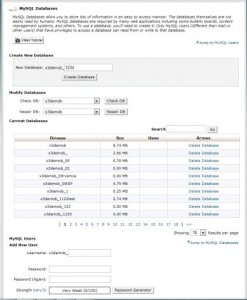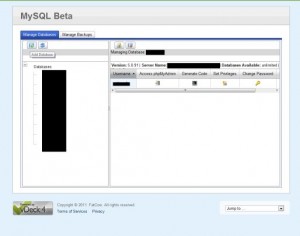Before I describe the steps to install WordPress, I thought I would take a few minutes to explain what it’s all about. Here we go.
In the early days of the Internet, HTML was king. Every website was based in this text-based language which used tags to hide the inner workings of a web page. Adding < > with some text inside, <html> for example, turned a normal text file into a file that could be viewed in a browser, without the <html> being shown. This was fine for a while but as pages became more complicated and websites became larger, HTML moved out of the range of the average person. Thankfully, WordPress came along in 2003 to save the day.
Any HTML site had to be updated, changed and designed in an editor. Sweeping changes could take days or weeks. WordPress solved this problem. Using a browser, anyone could update, change or design their site without knowing anything about HTML. Sure, it’s handy to know a bit of HTML but that isn’t 100% necessary. WordPress can handle a simple blog or a massively complicated website all on its own, thank you very much!
This blog post is being written in Google Chrome from my SOHO office. Tomorrow, I could write another post from my tiny netbook while I sip a cuppa in a coffee shop. Theoretically, I could update this blog from the other side of the world while sitting in an Internet cafe. I don’t need anything other than a password and a browser to log-in to WordPress and update this blog. There are some news sites around the world that use WordPress for their correspondents who update their input from all corners of the world. Here is a list of spectacular and well-known WordPress sites: WordPress-Showcase.
WordPress can have a simple, clean layout or it can be tuned to do pretty much anything you can think of. In order to use it, all you have to do is be able to use a password and a keyboard. In order to use it well, you have to search, read and experiment before you can create something better than the standard WordPress site. The beauty of WordPress is that it can be pretty much what you want it to be, it’s all up to you and how deeply you want to get into it.
All of the changes you make in WordPress are made inside your browser of choice. I use Chrome but you could use Safari or Firefox, whatever you want. The interface is really no different from the Word interface, with all of the controls across the top and links on either side to adjust other settings. Sure, initially this all looks very confusing but, trust me, after a while it feels like home. Images are uploaded right from the browser, not FTP. (Not that FTP is difficult but it’s an impediment to creativity sometimes, another step before you get to where you want to be.)
WordPress can be changed with dozens and dozens of themes , many of them free, which tinker with the look and feel of your final output. Plugins add other types of functionality, making WordPress do different things behind the scenes. None of this is rocket science. Some parts are confusing, certainly, but if you get stumped on something, there is always Google and a wealth of information available from other WordPress users.
One of the caveats to WordPress that I should explain is its slowness. Many people say that WordPress slows down your site. It does, but there are ways around that. I will discuss these in future posts but don’t consider this an impediment. Use my previous posts to set up your website and come back tomorrow to find out how to install it. Right now, check out the WordPress Showcase above, look for some free themes and decide what style and color combination that you prefer.
Thanks for reading! If you need info or want to comment, just ask and write below this. Follow me on Twitter: @_BrianMahoney



